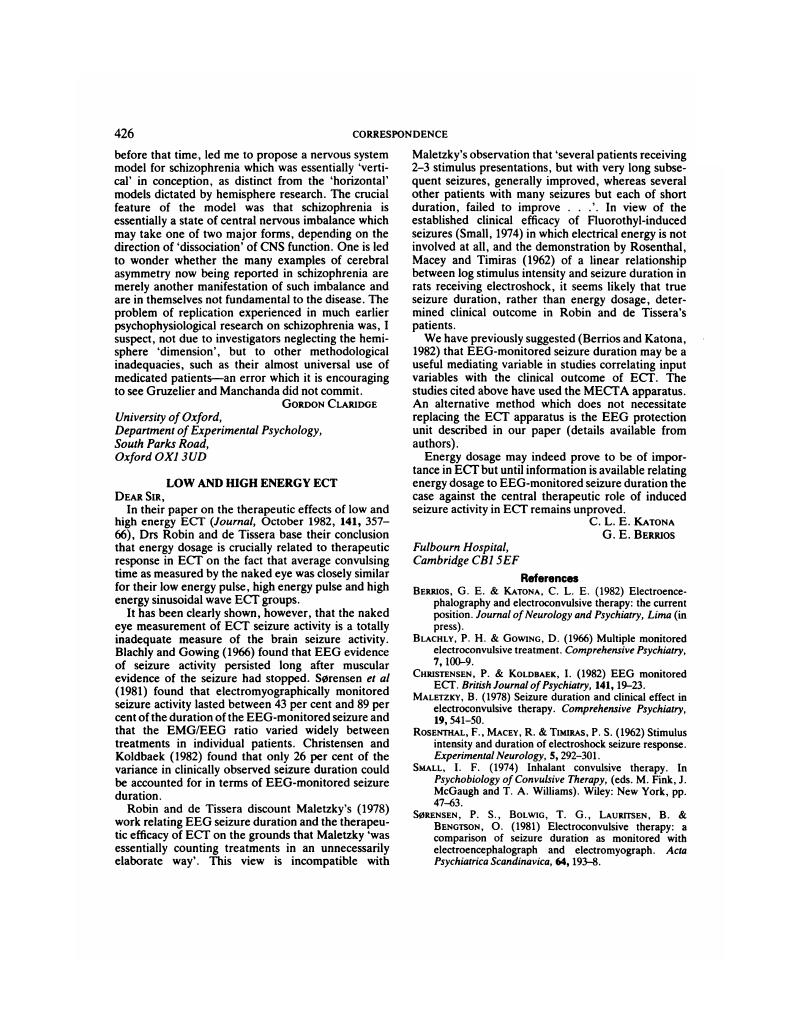Crossref Citations
This article has been cited by the following publications. This list is generated based on data provided by Crossref.
Garlepp, M I
Dawkins, R L
and
Christiansen, F T
1983.
HLA antigens and acetylcholine receptor antibodies in penicillamine induced myasthenia gravis..
BMJ,
Vol. 286,
Issue. 6375,
p.
1442.
Katona, C L
and
Aldridge, C R
1983.
Antidepressant effects of electroconvulsive therapy..
BMJ,
Vol. 286,
Issue. 6375,
p.
1443.
Harvey, K C
1983.
An anomaly in employing locums in general practice.
BMJ,
Vol. 286,
Issue. 6375,
p.
1443.
Robin, Ashley
Binnie, Colin D.
and
Copas, J. B.
1985.
Electrophysiological and Hormonal Responses to Three Types of Electroconvulsive Therapy.
British Journal of Psychiatry,
Vol. 147,
Issue. 6,
p.
707.






eLetters
No eLetters have been published for this article.